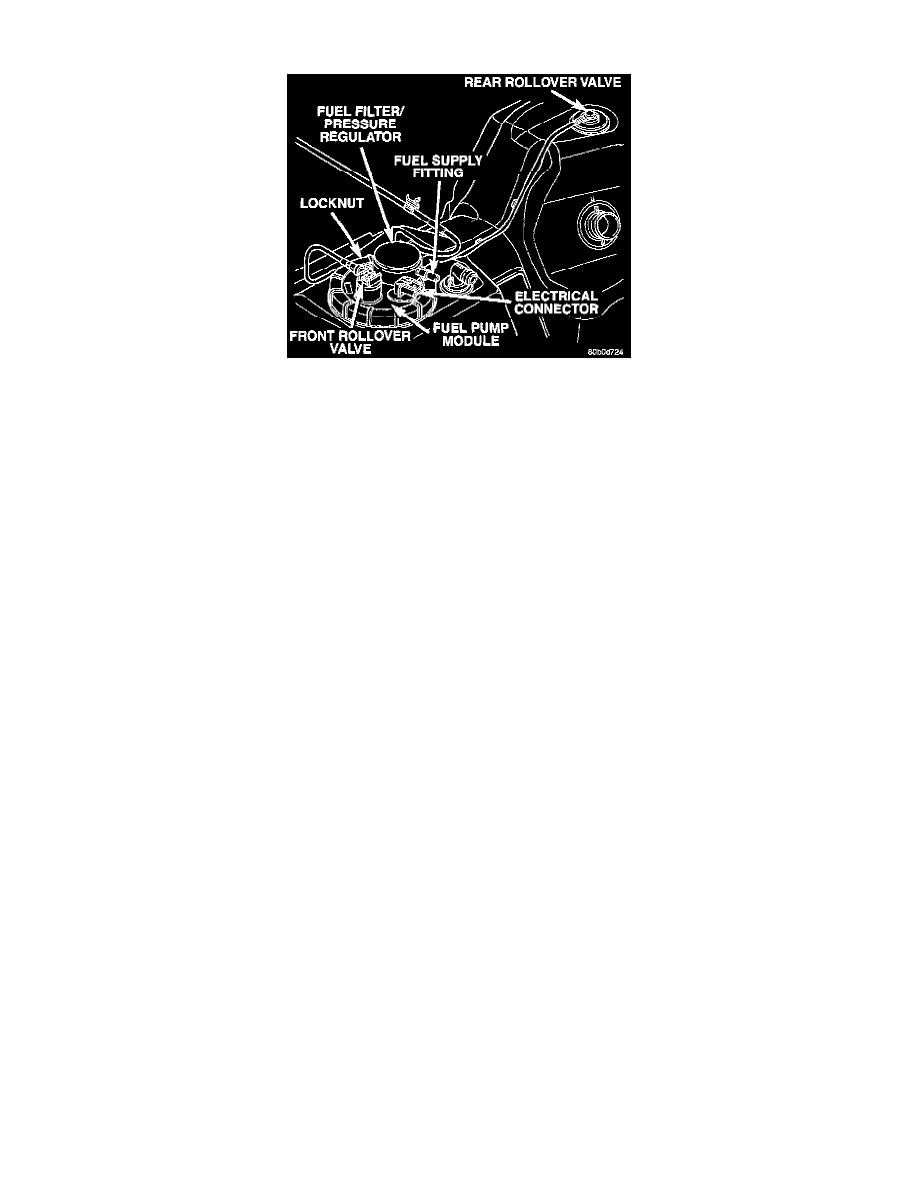RAM 2500 Truck 4WD V8-5.9L VIN Z LDC (1998)

Fuel Tank Unit: Description and Operation
Fuel Pump Module
FUEL PUMP MODULE
The fuel pump module on all gas powered engines is installed in the top of the fuel tank. The fuel pump module contains the following:
-
A combination fuel filter/fuel pressure regulator
-
Electric fuel pump
-
Fuel pump reservoir
-
A separate in-tank fuel pick-up filter (strainer)
-
Pressure relief/rollover valve
-
Fuel gauge sending unit (fuel level sensor)
-
Fuel supply line connection
-
auxiliary non-pressurized fuel supply fitting (not all engines)
FUEL PUMP
The fuel pump used in this system has a permanent magnet electric motor. The pump is part of the fuel pump module. Fuel is drawn in through a
filter at the bottom of the module and pushed through the electric motor gearset to the pump outlet.
Check Valve Operation: The pump outlet contains a one-way check valve to prevent fuel flow back into the tank and to maintain fuel supply line
pressure (engine warm) when pump is not operational. It is also used to keep the fuel supply line full of gasoline when pump is not operational.
After the vehicle has cooled down, fuel pressure may drop to 0 psi (cold fluid contracts), but liquid gasoline will remain in fuel supply line
between the check valve and fuel injectors. Fuel pressure that has dropped to 0 psi on a cooled down vehicle (engine off) is a normal condition.
Refer to the Fuel Pressure Leak Down Test in this group for more information.
Voltage to operate the electric pump is supplied through the fuel pump relay.
FUEL GAUGE SENDING UNIT
The fuel gauge sending unit (fuel level sensor) is attached to the side of the fuel pump module. The sending unit consists of a float, an arm, and a
variable resistor (track). The resistor track is used to send electrical signals for both fuel gauge operation and OBD II emission requirements.
For fuel gauge operation: As fuel level increases, the float and arm move up. This decreases the sending unit resistance, causing the fuel gauge to
read full. As fuel level decreases, the float and arm move down. This increases the sending unit resistance causing the fuel gauge to read empty.
For OBD II emission requirements: The voltage signal is sent from the resistor track to the Power train Control Module (PCM) to indicate fuel
level. The purpose of this feature is to prevent a false setting of misfire and fuel system monitor trouble codes if the fuel level in the tank is less
than approximately 15 percent of its rated capacity.
